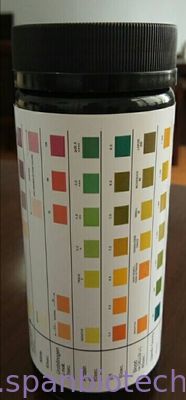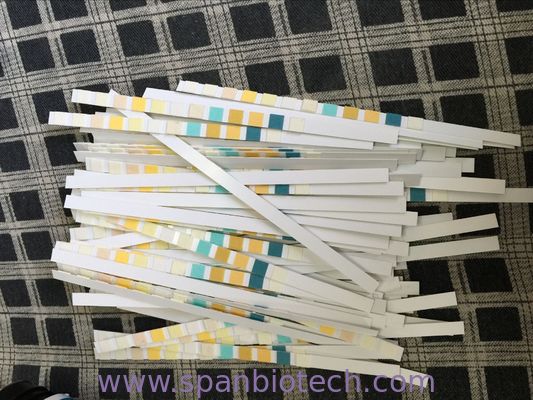|
|
URS-1G Rapid Test,Glucose,100strips/bottle,Neutral Packing with Competitive Price,100 strips/Bottle or 100 strips/Pouch
|
Product Details:
Payment & Shipping Terms:
|
URS-1G,Glucose
INTENDED USE
The Urinalysis Reagent Strips (Urine) are firm plastic strips onto which several separate reagent areas are affixed. The test is for the detection of one or more of the following analytes in urine: Ascorbic acid, Glucose, Bilirubin, Ketone (Acetoacetic acid), Specific Gravity, Blood, pH, Protein, Urobilinogen, Nitrite and Leukocytes.
SUMMARY
Urine undergoes many changes during states of disease or body dysfunction before blood composition is altered to a significant extent. Urinalysis is a useful procedure as an indicator of health or disease, and as such, is a part of routine health screening. The Urinalysis Reagent Strips (Urine) can be used in general evaluation of health, and aids in the diagnosis and monitoring of metabolic or systemic diseases that affect kidney function, endocrine disorders and diseases or disorders of the urinary tract.1,2
REAGENTS AND PERFORMANCE CHARACTERISTICS
Based on the dry weight at the time of impregnation, the concentrations given may vary within manufacturing tolerances. The following table below indicates read times and performance characteristics for each parameter.
![]()
STORAGE AND STABILITY
Store as packaged in the closed canister either at room temperature or refrigerated (2-30°C). Keep out of direct sunlight. The strip is stable through the expiration date printed on the canister label. Do not remove the desiccant. Remove only enough strips for immediate use. Replace cap immediately and tightly. DO NOT FREEZE. Do not use beyond the expiration date.
Note: Once the canister has been opened, the remaining strips are stable for up to 3 months. Stability may be reduced in high humidity conditions.
SPECIMEN COLLECTION AND PREPARATION
A urine specimen must be collected in a clean and dry container and tested as soon as possible. Do not centrifuge. The use of urine preservatives is not recommended. If testing cannot be done within an hour after voiding, refrigerate the specimen
immediately and let it return to room temperature before testing.
Prolonged storage of unpreserved urine at room temperature may result in microbial proliferation with resultant changes in pH. A shift to alkaline pH may cause false positive results with the protein test area. Urine containing glucose may decrease in pH as organisms metabolize the glucose.
Contamination of the urine specimen with skin cleansers containing chlorhexidine may affect protein (and to a lesser extent, specific gravity and bilirubin) test results.
MATERIALS
Materials Provided
• Strips
• Package insert
Materials Required But Not Provided
• Specimen collection container
• Time
DIRECTIONS FOR USE
Allow the strip, urine specimen, and/or controls to reach room temperature (15-30ºC) prior to testing.
1. Remove the strip from the closed canister and use it as soon as possible. Immediately close the canister tightly after after removing the required number of strip(s).Completely immerse the reagent areas of the strip in fresh, well-mixed urine and
immediately remove the strip to avoid dissolving the reagents. See illustration 1 below.
2. While removing the strip from the urine, run the edge of the strip against the rim of the urine container to remove excess urine. Hold the strip in a horizontal position and bring the edge of the strip into contact with an absorbent material (e.g. a paper towel) to avoid mixing chemicals from adjacent reagent areas and/or soiling hands with urine. See illustration 2 below.
3. Compare the reagent areas to the corresponding color blocks on the canister label at the specified times. Hold the strip close to the color blocks and match carefully.See illustration 3 below.
Note: Results may be read up to 2 minutes after the specified times.
![]()
Span Biotech Ltd.
Tel: +86(755)89589611
WhatsAPP:+8618823462100 (Wechat)
Web:www.spanbio.com
Contact Person: Ms. Anna Lee
Tel: +86-755-89589611
Fax: 86-755-89580096







